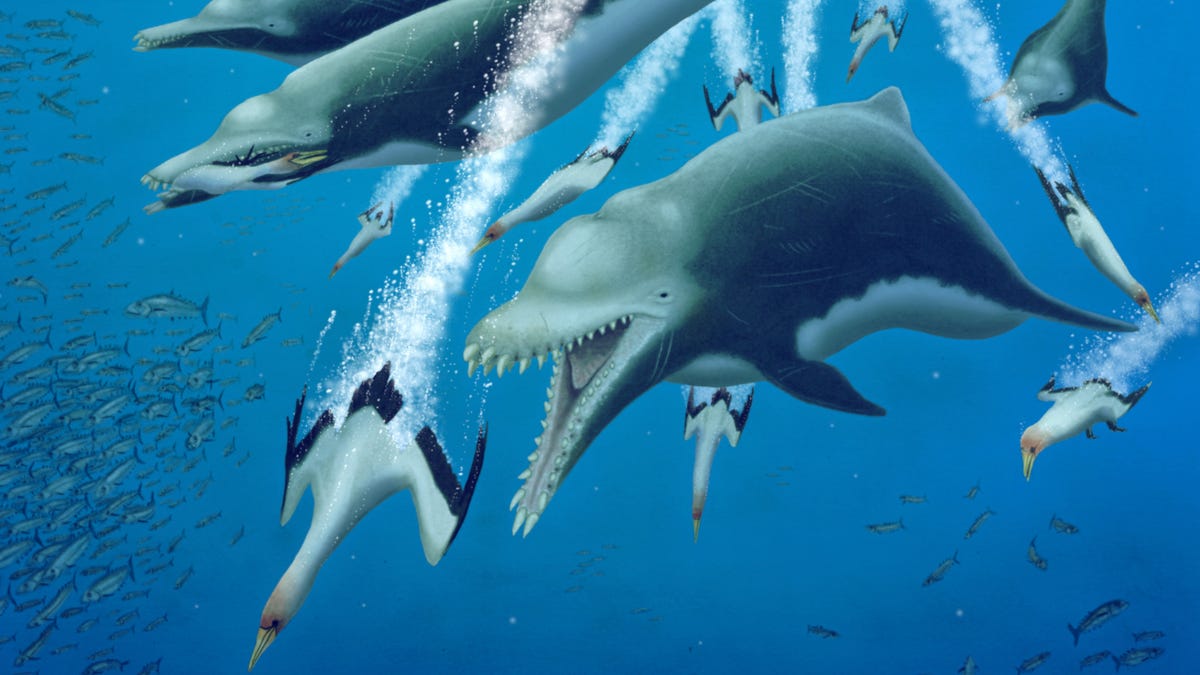Massive extinct dolphin was an apex predator with whale-like features
Whale, whale, whale, look what we have here.

Check out the chompers on these guys.
Dolphins may seem like the playful, intelligent mischief-makers of the sea, but it turns out at least one of their ancestors was a bit more on the toothy, predatorial side -- with similar features to contemporary whales.
A report, published in the journal Current Biology on Thursday, describes how the massive skeleton of an extinct dolphin shows signs of parallel evolution with modern baleen and toothed whales. The 15-foot skeleton was discovered in South Carolina and lived approximately 25 million years ago during the Oligocene -- and judging by its skull, teeth, size and snout, it was a top predator of the time.
The dolphin, Ankylorhiza tiedemani comb. n., was first discovered in fragments in the late 1800s, but the new, nearly complete find was discovered in the 1990s and pieced together over the decades. From its skeletal structure, scientists have determined it had similar postcranial features -- the bones of the creature's body -- to modern whales, implying that similar aquatic habitats led to the development of certain adaptations.
According to Robert Boessenecker, lead author of the report, "Some examples include the narrowing of the tail stock, increase in the number of tail vertebrae and shortening of the humerus (upper arm bone) in the flipper. This is not apparent in different lineages of seals and sea lions, for example, which evolved into different modes of swimming and have very different looking postcranial skeletons."
The skeleton also indicates Ankylorhiza may have been the first echolocating whale to become an apex predator. According to researchers, the species was "very clearly preying upon large-bodied prey" paving the way for killer sperm whales and eventually orca to take on that particular niche across the eons.
"Whales and dolphins have a complicated and long evolutionary history and, at a glance, you may not get that impression from modern species," Boessenecker said. "The fossil record has really cracked open this long, winding evolutionary path and fossils like Ankylorhiza help illuminate how this happened."

